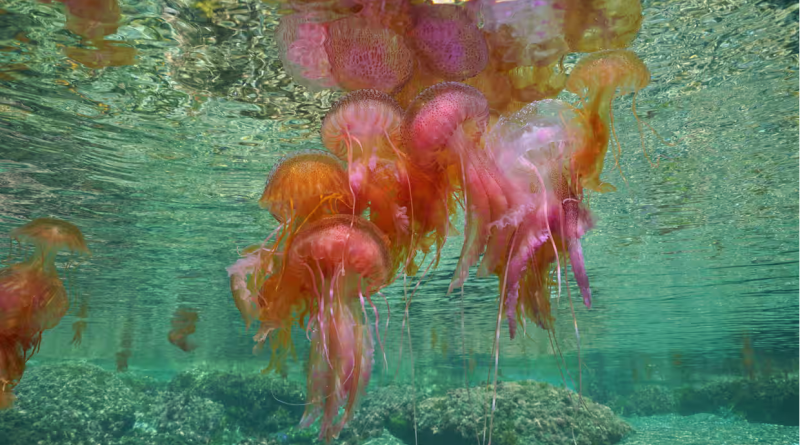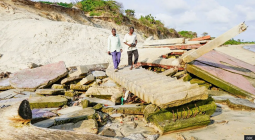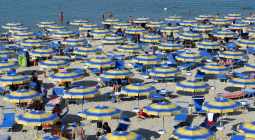Resorts on Spain’s Costa Brava struggle with invasion of jellyfish as seas warm

Mauve stinger jellyfish (Pelagia noctiluca) off the Catalan coast. Tarragona beaches were closed in July after highly venomous Portuguese man o’ war were seen. Photograph: Seaphotoart/Alamy
Costa Brava resorts in Spain’s north-east are struggling to cope with an influx of jellyfish as rising sea temperatures facilitate reproduction and drive species farther north.
Between May and August almost 7,500 people on the Catalan coast sought medical attention for jellyfish stings – a 41% increase on last year. The stings are painful and can have unpleasant consequences for anyone with compromised immunity.
MedusApp (jellyfish are medusas in Spanish), a citizen science phone app set up to allow the public to record sightings and stings, has reported hundreds each day this summer. It publishes a map that is updated in real time to help people avoid beaches with large numbers of jellyfish.
The majority of jellyfish on the Catalan coast are the relatively harmless fried egg (Cotylorhiza tuberculata) and barrel (Rhizotoma pulmo) varieties.
However, two beaches in Tarragona in southern Catalonia were closed in July after Portuguese man o’war (Physalia physalis) were spotted in the water. The sting of this siphonophore (it is not technically a jellyfish, but they are closely related) is especially painful.
Climate change and rising sea temperatures appeared to be the crucial factors behind the increase, said Macarena Marambio, a researcher at the Institute of Marine Science in Barcelona, whose records of jellyfish activity in the area go back 20 years.
“The jellyfish are becoming more common and are increasing both their seasonal and regional distribution,” said Marambio, who leads the Jellyfish Alert project. “Warmer seas aid reproduction and as a result we’re seeing increasing numbers of the purple barrel jellyfish.”
“All the research shows that the numbers are cyclical and some years jellyfish are much more numerous than in others,” she said. “However, what we’re seeing in the Costa Brava is the cycles are getting shorter. The cycle of years with abundant jellyfish are shortening in some species from eight or 10 years to just two.”
While Marambio points to the climate crisis as the key element, overfishing – which reduces predators – and the construction of breakwaters, ports, artificial beaches and marinas also play a part. This is because human activity reduces water quality and jellyfish are among the few species that can thrive in areas such as the port of Barcelona.
She said the focus was on the Catalan coast because there was more data available but there were similar increases in jellyfish populations elsewhere in the Mediterranean.
She added that it is impossible to extrapolate from the data whether this increase in jellyfish numbers will continue or if it is temporary.
“What we know is that environmental conditions are changing and we can model what we think will happen but we can’t know how the rest of the ecosystem will adapt,” Marambio said.
“For example, new predators might emerge. For now, we know rising sea temperatures are favourable to jellyfish blooms but we won’t know what will happen if temperatures rise further.”
In the meantime, we are likely to encounter more of the creatures.
Josep Maria Gili, Marambio’s colleague at the institute, said: “There’s no short-term solution because it’s about climate. We’ll have to get used to sharing our beaches with jellyfish.”





